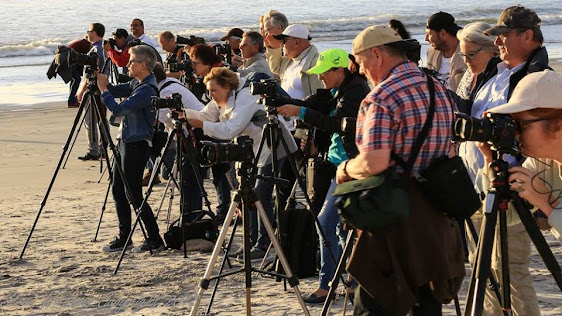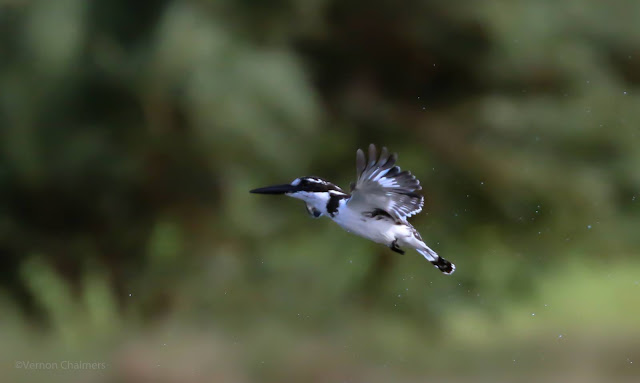Vernon Chalmers Photography Training Cape Town
 |
| Vernon Chalmers Photography Students Using Tripods * |
A tripod is a versatile tool that photographers use to stabilize their cameras and achieve sharper images in various situations. Here are some common scenarios and reasons to use a tripod in photography:
1. Long Exposures: When capturing scenes that require longer exposure times, such as landscape photography or night photography, a tripod becomes essential. It helps keep the camera perfectly still during the exposure, preventing blurring caused by camera shake. This is especially important when using slower shutter speeds to capture motion blur or low-light scenes.
2. Low-Light Situations: In dimly lit environments where you need to use a slower shutter speed to capture enough light, a tripod is invaluable. It allows you to maintain stability while avoiding camera shake, resulting in sharp images without relying on high ISO settings or artificial lighting.
3. Macro Photography: When shooting extreme close-ups or macro photography, depth of field becomes very shallow. The slightest movement can cause a loss of focus. A tripod ensures that your camera remains steady, allowing you to precisely position and focus on the subject while using smaller apertures for increased depth of field.
4. Landscape Photography: Tripods are widely used in landscape photography because they provide stability and allow photographers to carefully compose their shots. With a tripod, you can take your time to find the perfect composition, adjust framing, and maintain consistent framing for multiple exposures, such as when creating panoramas or HDR images.
5. Telephoto Lenses: Telephoto lenses have a narrower field of view and magnify camera movement, making them more susceptible to shake. Mounting your camera on a tripod helps stabilize the system and allows you to use longer focal lengths while maintaining sharpness.
6. Self-Portraits and Group Photos: Tripods are excellent for self-portraits and group photos because they eliminate the need for someone else to hold the camera. You can set up the tripod, use a self-timer or a remote shutter release, and ensure everyone is in the frame without any rushing or compromising image quality.
7. Precise Composition: A tripod gives you precise control over framing and composition. It enables you to make fine adjustments to the camera's position and maintain consistency between shots. This is particularly useful in situations where you need to compare or merge multiple images, such as for focus stacking or exposure bracketing.
8. Video Recording: If you're shooting video, a tripod is indispensable for stable footage. It allows you to pan smoothly, follow subjects with ease, and maintain a consistent frame. Some tripods even have dedicated fluid heads for smoother camera movements.
In summary, a tripod is beneficial in photography whenever stability, sharpness, precise composition, or prolonged exposures are required. It enhances image quality, expands creative possibilities, and helps you capture better photos in a variety of shooting situations." (Source: ChatGPT 2023)
Photography Private Training Cape Town
- Introduction to Photography / Canon Cameras More
- Birds in Flight Photography Training More
- Bird Photography Training Kirstenbosch More
- Canon EOS Autofocus / AI Servo Master Class More
- Birds in Flight Photography Workshop More
- Canon Speedlite / Ring Lite Flash Photography Workshop More
- Macro / Close-Up Photography Workshop Cape Town More
- Landscape / Long Exposure Photography Workshop More
- Real Estate / Interior Decor Photography Training More
- Samsung Galaxy Smartphone Photography Training More
- Digital Workflow / Lightroom Post-Processing Workshop More
* Image Credit: Steve Williams (Vernon Chalmers Landscape Training Milnerton Beach, Cape Town)
















